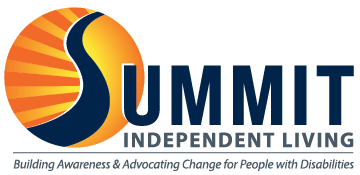The material presented on this webpage is for informational and educational purposes only as provided by Summit Independent Living. To see if you qualify for the Medicaid for Workers with Disabilities program, we urge you to visit with a Medicaid eligibility specialist at your local Office of Public Assistance as eligibility must be determined on an individual basis.
What is the Medicaid for Workers with Disabilities program?
Montana’s Medicaid for Workers with Disabilities program (MWD) recognizes the employment potential of people with disabilities. The Balanced Budget Act of 1997 (BBA) and the Ticket to Work and Work Incentives Improvement Act of 1999 (TWWIIA) allow states to provide Medicaid coverage to working individuals with disabilities who, because of their earnings, cannot qualify for Medicaid under other laws or programs. Montana’s Medicaid for Workers with Disabilities program is based on the Balanced Budget Act.
Medicaid eligibility is important because Medicaid is a program that covers typical health care expenses for individuals and families with limited incomes, including adults and children with disabilities. In addition, Medicaid covers many disability-specific services and supports not covered by private pay insurance, including things like personal assistance and developmental disability services. The fear of losing Medicaid coverage is one of the primary reasons many adults with disabilities are afraid or reluctant to gain employment.
The 2009 Montana Legislature passed SB 119, an act requiring the creation and implementation of a Medicaid for Workers with Disabilities program, a new Medicaid eligibility category specifically tailored for workers with disabilities. The purpose of the program is to support employment for individuals with disabilities by providing the opportunity to begin or continue to receive Medicaid benefits during their time of employment.
Under the Medicaid for Workers with Disabilities program, which was first implemented on July 1, 2010, people with disabilities can go or return to work and earn more money without losing their healthcare coverage through the Medicaid program because they can now “buy-in” to the program with a cost-share that is based on a sliding fee scale according to an individuals net-countable income.
Learn More about Montana’s MWD Program
Still Have Questions?
If you have specific questions related to the MWD program or to have your eligibility for the MWD program determined, please contact your local Office of Public Assistance.
Have questions about how working may affect your benefits?
Navigating the system and determining how employment can affect your Social Security, your Medicaid coverage, or other benefit programs you may be enrolled in, can be difficult and extremely confusing. We recommend visiting with a benefits specialist to discuss your options and learn how employment will affect you personally if you are considering going or returning to work. To assist in navigating the employment maze that comes from working while disabled and for other questions about how employment can affect you and your benefits, individuals can work with benefit specialists from a variety of locations including:
- Local Centers for Independent Living
- Vocational Rehabilitation,
- Montana Center for Inclusive Education Work Incentives Planning and Assistance Program (WIPA)
- The University of Montana Rural Institute,
- The Disability contact person at your local Job Service,
- or other Employment Network Provider agencies.
If you have additional general questions about Montana’s Medicaid for Workers with Disabilities program, if you would like for us to come and do a training or presentation about Montana’s Medicaid for Workers with Disabilities program for your group or organization, or if you would like us to set up an informational booth about Montana’s Medicaid for Workers with Disabilities program at your conference or other activity, please contact a Summit office near you.
This project was funded (in part) under a contract with the Montana Department of Public Health and Human Services and by the U.S.Department of Health and Human Services–Centers for Medicare and Medicaid Services — Federal Grant #1QACMS030322-03-00. The statements herein do not necessarily reflect the opinion of the Department. A total of $450 in Federal funding was spent in the development of this MWD webpage.

